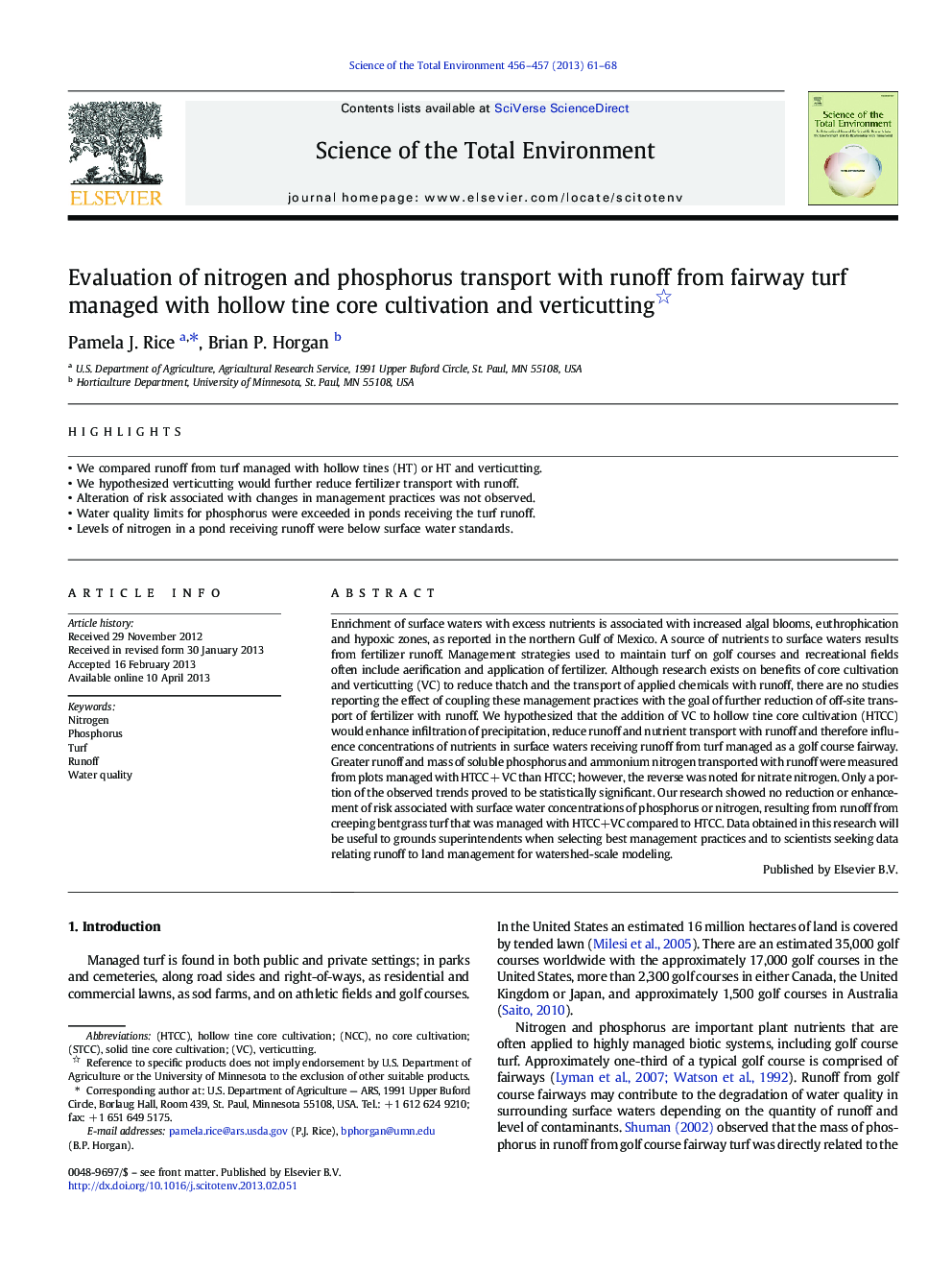| Article ID | Journal | Published Year | Pages | File Type |
|---|---|---|---|---|
| 4428793 | Science of The Total Environment | 2013 | 8 Pages |
•We compared runoff from turf managed with hollow tines (HT) or HT and verticutting.•We hypothesized verticutting would further reduce fertilizer transport with runoff.•Alteration of risk associated with changes in management practices was not observed.•Water quality limits for phosphorus were exceeded in ponds receiving the turf runoff.•Levels of nitrogen in a pond receiving runoff were below surface water standards.
Enrichment of surface waters with excess nutrients is associated with increased algal blooms, euthrophication and hypoxic zones, as reported in the northern Gulf of Mexico. A source of nutrients to surface waters results from fertilizer runoff. Management strategies used to maintain turf on golf courses and recreational fields often include aerification and application of fertilizer. Although research exists on benefits of core cultivation and verticutting (VC) to reduce thatch and the transport of applied chemicals with runoff, there are no studies reporting the effect of coupling these management practices with the goal of further reduction of off-site transport of fertilizer with runoff. We hypothesized that the addition of VC to hollow tine core cultivation (HTCC) would enhance infiltration of precipitation, reduce runoff and nutrient transport with runoff and therefore influence concentrations of nutrients in surface waters receiving runoff from turf managed as a golf course fairway. Greater runoff and mass of soluble phosphorus and ammonium nitrogen transported with runoff were measured from plots managed with HTCC + VC than HTCC; however, the reverse was noted for nitrate nitrogen. Only a portion of the observed trends proved to be statistically significant. Our research showed no reduction or enhancement of risk associated with surface water concentrations of phosphorus or nitrogen, resulting from runoff from creeping bentgrass turf that was managed with HTCC+VC compared to HTCC. Data obtained in this research will be useful to grounds superintendents when selecting best management practices and to scientists seeking data relating runoff to land management for watershed-scale modeling.
